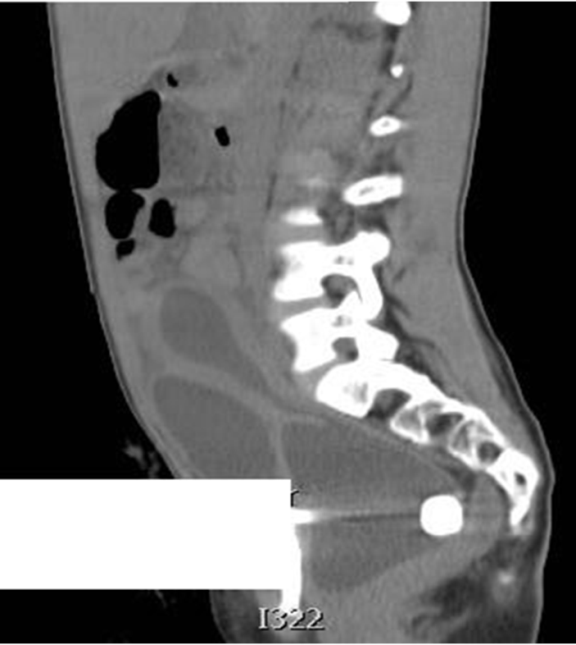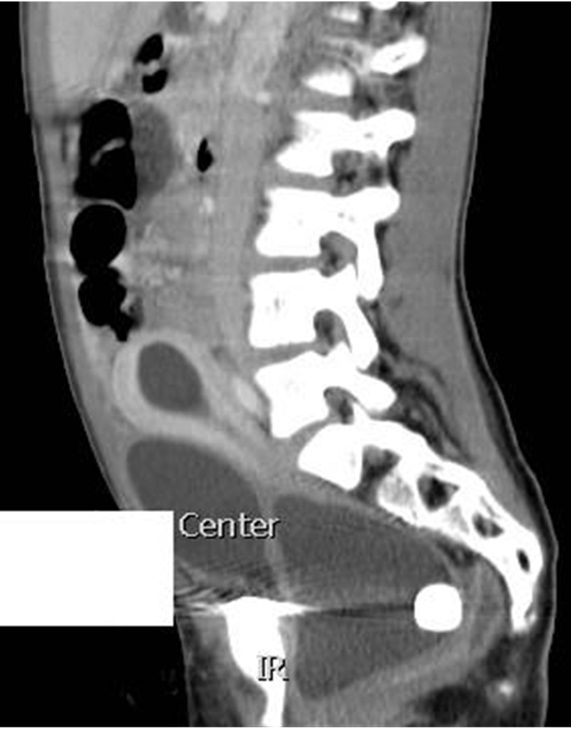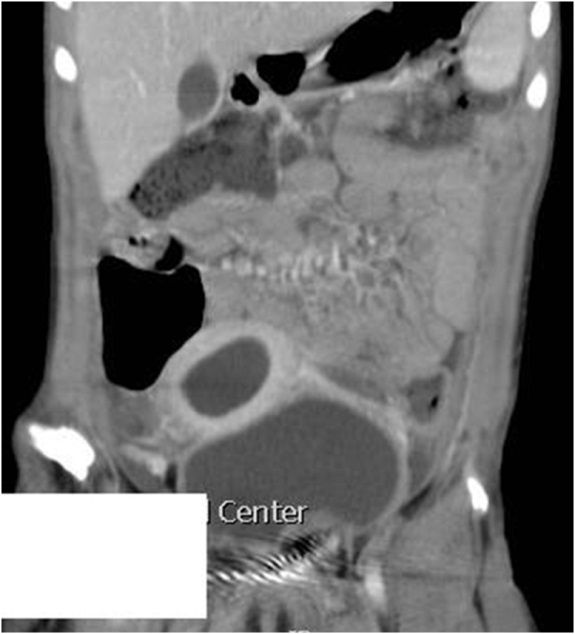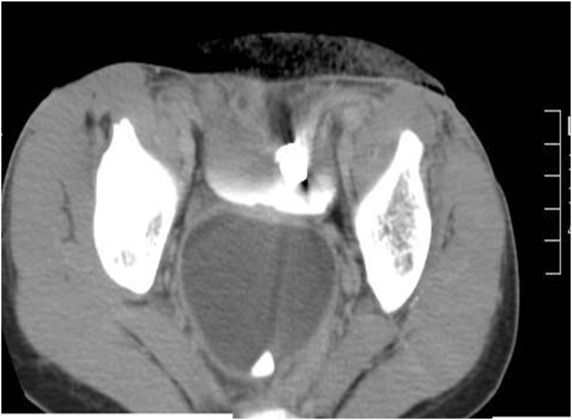Vaginal Calculi
A 13-year-old female presented in the ED with severe abdominal pain. No proper history is available, but patient did have surgery in pelvis. CT scan with I/V contrast was performed.
Clinical History: A 13-year-old female patient presented in the emergency department with severe abdominal pain. No proper history is available, but patient did have surgery in pelvis. On request of clinician CT scan with I/V contrast was performed.

Figure 1. Sagital image from plain CT showing dilated vagina with calculi.

Figure 2. Sagital image from plain CT showing dilated vagina with calculi.

Figure 3. Coronal image from contrast CT showing dilated uterus superior to urinary bladder.

Figure 4. Axial image from contrast CT showing dilated vagina with calculi posterior to urinary bladder.
Contrast CT scan findings: The vagina and uterus appear dilated and fluid filled. Multiple calculi are seen in the vagina. The dilated vagina is displacing the urinary bladder superiorly and compressing the rectum posterior. Surgical metallic staple is seen for pubic symphysis denoting previous surgery.
Discussion: Primary vaginal calculi are due to urinary leak into the vagina through various types of fistulae and are associated with vaginal obstruction and urinary stasis. [1] In the absence of obstruction and stasis of urine in the vagina, infection with urease-splitting bacteria alone, is also cited as an etiological factor for stone formation. [2]
References
1. Raghaviah NY, Devi AI. Primary vaginal stones. J Urol 1980: 123: 771-772.
2. Mahapatra TP, Rao MS, Sharma SK, Vaidyanathan S. Vesical calculi associated with Vesico vaginal fistulas - management considerations. J Urol 1986; 136: 94-95.
Sikander Ali Khan, MD, consultant radiologist, Royal Commission Medical Center, Saudi Arabia
The Reading Room Podcast: Current Perspectives on the Updated Appropriate Use Criteria for Brain PET
March 18th 2025In a new podcast, Satoshi Minoshima, M.D., Ph.D., and James Williams, Ph.D., share their insights on the recently updated appropriate use criteria for amyloid PET and tau PET in patients with mild cognitive impairment.
MRI Study Suggests Shape of White Matter Hyperintensities May Be Predictive of Cognitive Decline
April 7th 2025Emerging research demonstrated that cognitive declines in memory, executive function and processing speed domains were associated with irregular shape of periventricular/confluent white matter hyperintensities.
What New Research Reveals About Novice Use of AI-Guided Cardiac Ultrasound
April 4th 2025In a study recently presented at the American College of Cardiology (ACC) conference, researchers found that novice use of AI-guided cardiac ultrasound after an AI-enabled electrocardiogram increased the positive predictive value for reduced left ventricular ejection fraction (LVEF) or aortic valve stenosis by 33 percent.
Can Abbreviated MRI Have an Impact in Rectal Cancer Staging?
April 4th 2025Abbreviated MRI demonstrated a 95.3 percent specificity for rectal cancer and provided strong agreement with the full MRI protocol for T staging and detection of extramural venous invasion, according to newly published research.